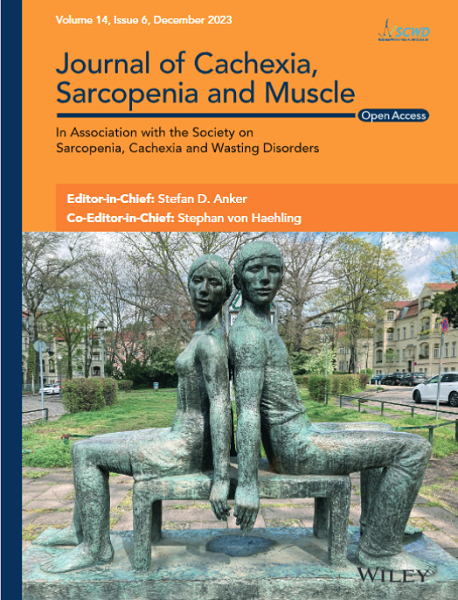Loss of popdc3 Impairs Mitochondrial Function and Causes Skeletal Muscle Atrophy and Reduced Swimming Ability in Zebrafish
Abstract
Background
The Popeye domain containing 3 (POPDC3) protein is essential for the maintenance of skeletal muscle homeostasis. POPDC3 is a pathogenic variant gene of limb-girdle muscular dystrophy (LGMD), and its variants lead to LGMDR26. At the animal level, zebrafish larvae with popdc3 mutations develop tail curls and muscle atrophy. However, the mechanism of skeletal muscle atrophy induced by POPDC3 variants/loss remains unclear.
Methods
Eight-month-old male WT and popdc3 mKO zebrafish were used for this research. Loli Track (Denwmark) and Loligo Swimming Respirometer were used to observe the zebrafish's swimming ability. The zebrafish skeletal muscle structure and cross-sectional area (CSA) were observed and counted by transmission electron microscopy (TEM), H&E and wheat germ agglutinin (WGA). Enriched genes and signalling pathways were analysed using RNA sequencing, and the effects of popdc3 mKO on zebrafish skeletal muscle mitochondrial respiration, biogenesis and dynamics were examined to investigate possible mechanisms.
Results
The swimming ability of popdc3 mKO zebrafish was reduced, and as evidenced by the reluctance to move, fewer movement trajectories, the total distance travelled (p < 0.001), the average velocity of movement (p < 0.001), oxygen consumption (MO2) (p < 0.01), maximum oxygen consumption (MO2max) (p < 0.05), critical swimming speed (Ucrit) (p < 0.01) and relative swimming speed (Ucrit-r) (p < 0.01) were significantly decreased and increased of the exhaustive swimming time (p < 0.01). In addition, loss of popdc3 reduced zebrafish skeletal muscle weight (p < 0.001), muscle/body weight (p < 0.01), myofibre size and CSA (p < 0.01), increased protein degradation (ubiquitination and autophagy) (p < 0.05) and decreased protein synthesis (p < 0.05), suggesting that popdc3 deficiency induces zebrafish skeletal muscle atrophy. Further, popdc3 mKO zebrafish mitochondrial function is reduced, as evidenced by impaired mitochondrial respiration, decreased biogenesis and kinetic imbalance (p < 0.05).
Conclusions
POPDC3, a Popeye protein, plays an important role in controlling mitochondrial function and skeletal muscle mass and strength. Loss of popdc3 decreases mitochondrial respiration and mitochondrial biogenesis, disrupting kinetic homeostasis, which induces mitochondrial dysfunction and impaired protein turnover (reduced synthesis and increased degradation), leading to zebrafish skeletal muscle atrophy.


 求助内容:
求助内容: 应助结果提醒方式:
应助结果提醒方式:


